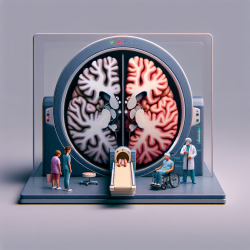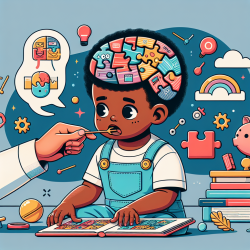Introduction
In the realm of speech-language pathology and child development, understanding the neural underpinnings of mental health disorders is crucial. The study titled "Adolescents with current major depressive disorder show dissimilar patterns of age-related differences in ACC and thalamus" sheds light on the neural differences in adolescents with Major Depressive Disorder (MDD). This research provides valuable insights that can guide practitioners in tailoring interventions for young individuals facing depression.
Research Highlights
The study explored grey matter volume (GMV) differences in the anterior cingulate cortex (ACC) and thalamus between adolescents with MDD and healthy controls. Key findings include:
- No significant group differences in GMV were observed at the whole-brain level.
- Significant group-by-age interactions were noted in the ACC and thalamus, indicating dissimilar patterns of age-related differences between the two groups.
- In adolescents with MDD, GMV in the thalamus inversely correlated with self-reported depressive symptoms, unlike the ACC.
Implications for Practitioners
For practitioners, these findings underscore the importance of considering age and symptom severity when assessing and treating adolescents with MDD. The study suggests that:
- The ACC and thalamus may serve as neural markers for detecting age-related and symptom-sensitive patterns in youth with MDD.
- Interventions should be tailored to address the unique neural and developmental profiles of adolescents, taking into account the interaction between age and depressive symptoms.
Encouraging Further Research
While this study provides a foundational understanding, further research is needed to explore the longitudinal effects of MDD on brain development. Practitioners are encouraged to engage in or support research that examines:
- The developmental trajectory of GMV changes in adolescents with MDD over time.
- The potential role of early interventions in mitigating neural and psychological impacts of depression.
Conclusion
Understanding the neural differences in adolescents with MDD is pivotal for developing effective interventions. By integrating these research findings into practice, practitioners can enhance their ability to support the mental health and developmental needs of young individuals.
To read the original research paper, please follow this link: Adolescents with current major depressive disorder show dissimilar patterns of age-related differences in ACC and thalamus.










